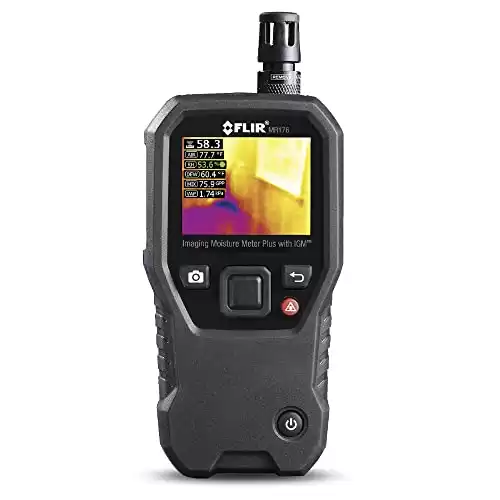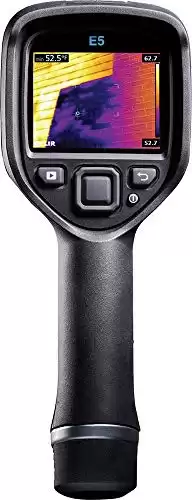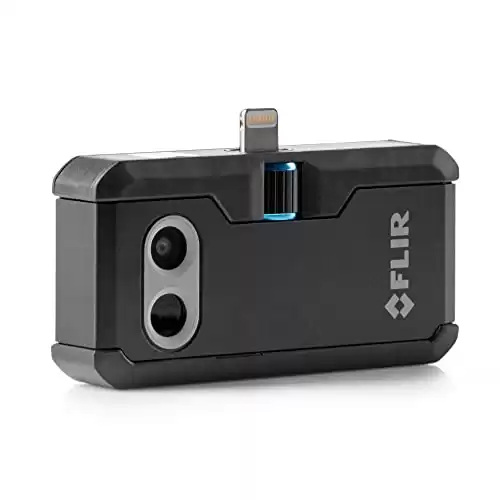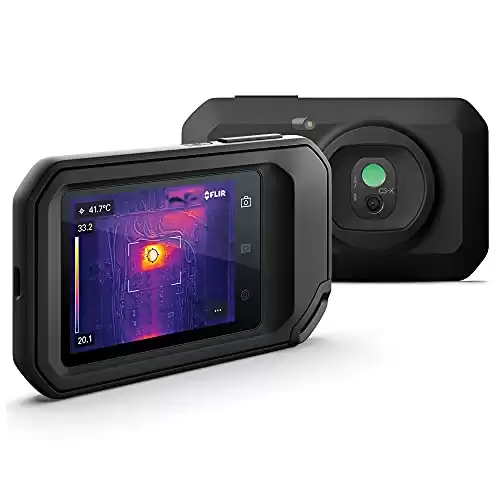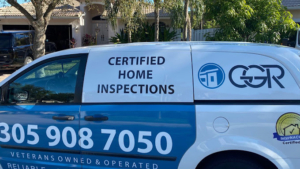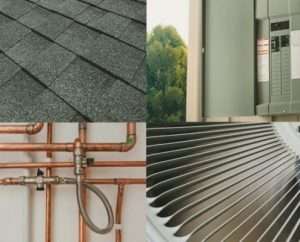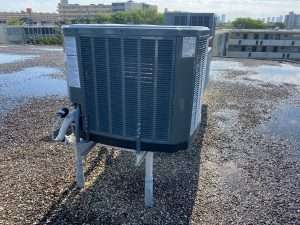How Home Inspectors Utilize Infrared
Cameras for Comprehensive Inspections

Are you considering purchasing a new home? Making sure that the property you’re interested in is in good condition. This is where a home inspector comes in. With their expertise and tools, such as an infrared camera, they can uncover hidden issues that the naked eye can’t detect. In this blog post, we will explore how a home inspector utilizes an infrared camera to provide a thorough assessment of a property’s condition. Let’s dive in!
What is an Infrared Camera?
An infrared camera, also known as a thermal imaging camera, is a device that detects and captures the heat radiation emitted by objects and converts it into a visible image. Unlike traditional cameras that rely on visible light, infrared cameras operate in the infrared spectrum, which is beyond what the human eye can perceive.
How Does an Infrared Camera Work?
Infrared cameras work based on the principle of thermography. They contain special sensors called microbolometers that can detect and measure variations in infrared radiation. These sensors convert the thermal energy emitted by an object into electrical signals, which are then processed by the camera’s software to create a visual representation of the temperature distribution.
Benefits of Using an Infrared Camera
1. Non-Contact Temperature Measurement
One of the primary advantages of using an infrared camera is its ability to measure temperature without direct contact. This makes it useful in situations where physical touch is either impractical or dangerous, such as when inspecting electrical systems, HVAC equipment, or detecting hotspots in machinery.
2. Enhanced Inspections and Diagnostics
Infrared cameras enable home inspectors to identify hidden issues that may not be visible to the naked eye. By detecting variations in temperature, they can help identify potential problems such as insulation gaps, moisture intrusion, or electrical faults. This allows for more comprehensive and reliable inspections, leading to better-informed decisions regarding maintenance and repairs.
3. Time and Cost Savings
The use of infrared cameras can significantly reduce inspection time and costs. By quickly pinpointing areas of concern, inspectors can focus their attention on specific problem areas, avoiding unnecessary exploratory work. This not only saves time but also minimizes disruptions and potential damage during invasive inspections.
4. Prevention of Further Damage
Infrared cameras provide an early detection system for issues that may lead to more significant problems if left unaddressed. By identifying potential hazards or hidden defects, immediate action can be taken to prevent further damage, ensuring the safety and integrity of the home or building.
In summary, infrared cameras play a vital role in the field of home inspection by capturing and visualizing heat radiation. These devices provide non-contact temperature measurement, enhance inspections and diagnostics, save time and costs, and help prevent further damage. With their ability to see beyond what the naked eye can perceive, infrared cameras enable inspectors to effectively identify and address issues, ensuring the overall quality and safety of a property.
How does an Infrared Camera Work?
An infrared camera is a powerful tool used by home inspectors to identify and assess potential issues in a building or structure that may not be visible to the naked eye. By capturing thermal images, an infrared camera can detect temperature variations and uncover hidden problems. Let’s explore the principles of thermography and how an infrared camera detects temperature variations.
Principles of Thermography
Thermography is the science of measuring and mapping temperature variations. It is based on the principle that all objects emit thermal energy, or heat, in the form of infrared radiation. This radiation is invisible to the human eye but can be captured and interpreted by an infrared camera.
Thermography relies on the fact that different materials and surfaces emit and retain heat differently. When there is a temperature difference between objects or areas, it becomes visible through the thermal images captured by the infrared camera.
How an Infrared Camera Detects Temperature Variations
Infrared cameras detect temperature variations by using a specialized lens that focuses the infrared radiation onto an infrared sensor array. The sensor array then converts the infrared radiation into an electrical signal, which is in turn processed and translated into visible images that represent different temperature levels.
These thermal images display a color gradient, with warmer areas appearing as shades of red, orange, or yellow, and cooler areas as shades of blue or purple. By interpreting these color variations, experts can identify potential issues such as heat loss, moisture intrusion, electrical problems, or even structural abnormalities.
The ability of an infrared camera to detect temperature variations accurately for home inspectors. By identifying anomalies in thermal patterns, they can pinpoint potential areas of concern and provide valuable insights into the condition of a building or property.
Benefits of using an infrared camera in home inspections
Detecting hidden moisture
One of the primary benefits of utilizing an infrared camera in home inspections is its effectiveness in detecting hidden moisture. Water damage can go unnoticed, leading to mold growth and structural issues if left untreated. With an infrared camera, inspectors can identify areas of excessive moisture by detecting temperature variations. This allows them to target potential problem areas and provide recommendations for further investigation or repairs.
Identifying electrical issues
Electrical problems can pose serious risks to both the residents and the property itself. An infrared camera can help identify hidden electrical issues that might not be apparent during a visual inspection. By detecting heat signatures, inspectors can pinpoint overloaded circuits, loose connections, and other electrical anomalies. This early detection can prevent potential fire hazards and save homeowners from costly repairs or safety hazards.
Locating insulation gaps and air leaks
Inefficient insulation and air leaks can lead to energy loss, discomfort, and increased utility bills. By using an infrared camera, home inspectors can easily identify insulation gaps and air leaks that might not be visible. The camera can detect temperature differences, allowing inspectors to pinpoint areas where insulation is lacking or where air is escaping. This information enables homeowners to take corrective measures, enhancing energy efficiency and overall comfort in the residence.
Finding pest infestations
Pest infestations can be a nightmare for homeowners, causing damage to the property and potential health hazards. Infrared cameras can help detect the presence of pests such as rodents or termites by identifying their heat signatures. These cameras can reveal hidden nests, pathways, or areas of infestation that may not be easily noticeable. By catching pest problems early on, homeowners can take prompt action to mitigate the issue, reducing damage and potential health risks.
The Process of Using an Infrared Camera During a Home Inspection
During a home inspection, one of the valuable tools that a professional home inspector may use is an infrared camera. This advanced equipment can provide insights by detecting and capturing thermal energy emitted by various objects and surfaces. In this section, we will explore the process of using an infrared camera during a home inspection.
Preparing the Property for the Inspection
Before beginning the inspection, the home inspector will ensure that the property is adequately prepared. This involves assessing and addressing any factors that could interfere with the accuracy of the infrared camera readings. For example, the inspector will check for obstructions such as furniture, curtains, or carpets that may hinder the camera’s ability to capture accurate thermal images. Additionally, they may need to adjust the temperature and lighting conditions of the property to optimize the camera’s performance.
Capturing Images with the Infrared Camera
Once the property is properly prepared, the home inspector will proceed to capture images using the infrared camera. They will walk through the property and systematically scan various areas, capturing thermal images of different surfaces and objects. The infrared camera works by measuring the temperature variations in the detected thermal energy and translating them into visual representations. The inspector will pay close attention to areas such as walls, ceilings, windows, doors, electrical systems, and plumbing components to identify potential anomalies that may be hidden to the naked eye.
Analyzing the Images for Anomalies
After capturing the thermal images, the home inspector will carefully analyze them for any anomalies or irregularities. They will look for temperature differences that may indicate hidden issues such as insulation problems, leaks, electrical hotspots, or moisture buildup. By comparing the temperature variations, the inspector can identify potential areas of concern that require further investigation or remediation. The use of an infrared camera allows for a non-invasive assessment, which can save time and minimize the need for destructive inspections.
Reporting the Findings to the Homeowner
Once the analysis is complete, the home inspector will compile a detailed report of their findings. They will include the thermal images taken during the inspection, highlighting any identified anomalies or areas of concern. This report will be presented to the homeowner, providing them with valuable insights into the condition of their property. The inspector will explain the significance of the identified issues and recommend appropriate actions for further evaluation or repairs. By sharing this information, the homeowner can make informed decisions about the maintenance or potential improvements needed for their property.
Using an infrared camera during a home inspection offers an additional layer of assessment that can help uncover hidden problems or potential energy efficiency issues. By following a systematic process of preparation, image capture, analysis, and reporting, home inspectors can provide homeowners with comprehensive insights into the condition of their property. This enables informed decision-making and ensures the overall well-being and safety of the home.
Choosing a Qualified Home Inspector with Infrared Camera Expertise
When it comes to inspecting your home, having the right tools and expertise is critical. One of the most valuable tools a home inspector can possess is an infrared camera. With its ability to detect hidden issues and potential problems, hiring a qualified home inspector with infrared camera expertise can provide you with invaluable insights. In this section, we will discuss the key factors to consider when selecting a home inspector.
Checking Certifications and Qualifications
Before hiring a home inspector, it is essential to check their certifications and qualifications. Look for inspectors who are certified by recognized organizations such as the International Association of Certified Home Inspectors (InterNACHI) or the American Society of Home Inspectors (ASHI). These certifications ensure that the inspector has undergone proper training and adheres to industry standards.
Reading Customer Reviews and Testimonials
To get a sense of the inspector’s reputation and reliability, it is a good idea to read customer reviews and testimonials. Look for feedback from previous clients who have had their homes inspected using infrared cameras. Pay attention to their experiences, level of satisfaction, and any specific details they mention about the inspector’s expertise in using infrared technology. This will help you gauge the inspector’s track record and determine if they are the right fit for your needs.
Inquiring About Previous Infrared Camera Inspection Experience
In addition to certifications and customer reviews, it is important to inquire about the inspector’s previous experience in conducting infrared camera inspections. Ask how many inspections they have performed using infrared technology and if they have encountered any common issues specific to this type of inspection. A seasoned inspector with a strong background in infrared camera inspections will be better equipped to identify potential problems that may go unnoticed with traditional inspection methods.
By taking the time to check certifications, read customer reviews, and inquire about previous infrared camera inspection experience, you can ensure that you are hiring a home inspector with the necessary expertise. This will give you peace of mind knowing that your home inspection will be thorough and comprehensive, helping you identify any hidden issues and make informed decisions about your property.
Limitations and Considerations when Using an Infrared Camera
Infrared cameras, also known as thermal imaging cameras, have become an invaluable tool for home inspectors. They can detect hidden issues in a property by capturing thermal images that reveal temperature variations. However, it is important to be aware of the limitations and considerations when using an infrared camera to ensure accurate and reliable results.
Factors that may Affect Accuracy
- Environmental Conditions: Infrared cameras are sensitive to external factors such as ambient temperature, humidity, and air movement. Extreme weather conditions, strong winds, or direct sunlight can impact the accuracy of the thermal images. It is essential to conduct inspections in optimal weather conditions for more reliable results.
- Surface Emissivity: Each material has a different emissivity, which determines how well it emits infrared radiation. Infrared cameras rely on this emissivity to accurately measure temperatures. Surfaces with low emissivity, like shiny metals or polished materials, may not provide accurate temperature readings. It is advisable to consider surface emissivity and compensate for any variations during the inspection.
- Distance and Focus: Infrared cameras have a specific range and focus distance. To maintain accuracy, it is important to follow the camera manufacturer’s guidelines regarding distance and focus. Failing to do so may result in distorted thermal images or inaccurately measured temperatures.
Potential Challenges in Interpreting Infrared Images
- Lack of Training and Experience: Interpreting thermal images requires training and experience to accurately identify potential issues. Without proper knowledge, it can be challenging to distinguish between normal temperature variations and indications of underlying problems. Hiring a qualified home inspector who is trained in thermal imaging can help mitigate this challenge.
- Complexity of Building Structures: The interpretation of thermal images can be complicated in complex building structures. Issues such as concealed insulation, multiple layers, or unique architectural features can impact the accuracy of the thermal images. In such cases, it may be necessary to supplement the inspection with traditional methods for a comprehensive understanding.
Supplementing the Inspection with Traditional Methods
While infrared cameras provide valuable insights, they should not be relied upon as the sole method of inspection. It is essential to supplement the use of thermal imaging with traditional inspection methods to obtain a complete assessment of the property.
- Visual and Manual Examination: Visual inspection and manual examination play a role in identifying issues that may not be evident in thermal images. Inspectors should thoroughly examine the property, checking for physical signs such as water stains, cracks, leaks, or structural damages that may not be detected by the infrared camera.
- Specialized Equipment: In certain situations, specialized equipment may be necessary to further investigate potential issues identified through thermal imaging. For example, moisture meters or borescopes can be used to validate the presence of moisture or determine the extent of hidden damage. Combining these tools with thermal imaging enhances the accuracy and reliability of the inspection.
Conclusion
The use of an infrared camera by a home inspector can greatly enhance the accuracy and effectiveness of the inspection process. With its ability to detect hidden issues such as moisture intrusion, electrical hotspots, and insulation deficiencies, an infrared camera serves as a valuable tool in identifying potential problems that may not be visible to the naked eye. By capturing thermal images, home inspectors can provide homeowners with a comprehensive analysis of their property’s condition, helping them make informed decisions and take necessary actions to maintain or improve their homes. The incorporation of infrared technology into home inspections not only helps adds credibility to the inspection report but also ensures that homeowners can enjoy a safe and comfortable living environment.


